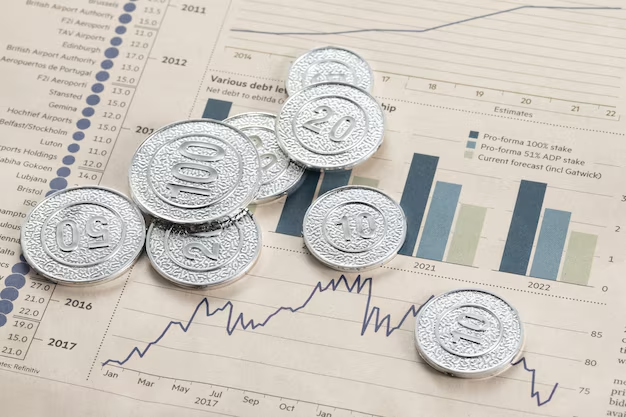Understanding Dividend Stocks: Your Complete Guide
Imagine earning money while you sleep. Sounds intriguing, right? Welcome to the world of dividend stocks, where savvy investors can build wealth through steady, passive income streams. This guide will demystify how dividend stocks work and empower you with insights to consider adding them to your investment portfolio.
What Are Dividend Stocks?
Dividend stocks are shares in companies that return a portion of their earnings to shareholders as dividends. Unlike stocks that primarily capitalize on price appreciation, dividend stocks provide a regular income stream. Companies distribute dividends to share profits, reward loyal shareholders, or signal financial health.
💡 Key Takeaways About Dividend Stocks
- Regular Income: Receive cash payouts regularly from your investments.
- Long-Term Growth: Often associated with stable, reputable companies.
- Portfolio Diversification: Can be a hedge against market volatility.
How Do Dividends Work?
Dividends typically come as cash or additional shares and are distributed on a per-share basis. Let's dive into the process:
1. Declaration Date
Here, the company announces its intention to pay a dividend. This includes the amount, the ex-dividend date, the record date, and the payment date.
2. Ex-Dividend Date
This critical date determines eligibility for the dividend. To receive the dividend, you must own the stock before this date. After this date, new buyers are not entitled to the upcoming dividend.
3. Record Date
The day the company records shareholders eligible for the dividend. Usually, it falls a couple of days post the ex-dividend date due to the settlement period.
4. Payment Date
On this day, the company distributes the declared dividends to eligible shareholders.
Types of Dividends
Understanding various dividend types can enrich your investment strategies:
- Cash Dividends: The most common form involves direct cash payments to shareholders.
- Stock Dividends: Additional shares are provided, diluting the share price but not the shareholder’s overall value.
- Special Dividends: One-time distributions, often arising from extraordinary profits or asset sales.
The Appeal of Dividend Stocks
📊 Why Invest in Dividend Stocks?
- Steady Income: Ideal for creating a passive revenue stream, especially during retirement.
- Lower Risk: Tend to belong to established, financially secure entities.
- Reinvesting Opportunities: Use dividends to purchase additional shares, compounding your returns.
Growth vs. Value: Where Do Dividends Fit?
Growth stocks often reinvest profits to expand operations, offering little in dividends. In contrast, value stocks, known for dividends, emphasize steady earnings and smaller price fluctuations. Therefore, dividend stocks tend to stabilize your portfolio with predictable returns.
Key Metrics for Evaluating Dividend Stocks
Assessing dividend stock potential requires scrutinizing:
- Dividend Yield: Measures annual dividends as a percentage of stock price, gauging income efficiency.
- Payout Ratio: The share of earnings paid as dividends, indicating sustainability.
- Dividend Growth Rate: Reflects dividend changes over time, suggesting future increases.
How to Choose the Right Dividend Stocks
Selecting the right stocks involves more than chasing high yields. Consider these factors:
- Dividend History: Companies with consistent payouts demonstrate commitment.
- Earnings Stability: Strong earnings indicate a firm foundation.
- Industry Position: Leaders in stable industries often provide reliable dividends.
Strategies for Dividend Investing
To optimize your investments, consider these strategies:
- Dividend Growth Strategy: Focuses on companies with rising dividends, promoting capital growth.
- High Dividend Yield Strategy: Prioritizes stocks with high yields for immediate income.
- Dividend Aristocrats: Invest in companies with an established history of increasing dividends.
Potential Risks and Considerations
⚖️ Balancing Risks and Rewards
While appealing, dividend stocks aren't without risks:
- Market Risks: Stock prices may fluctuate, affecting overall investment value.
- Dividend Cuts: Economic downturns can lead to reduced or suspended dividends.
- Interest Rate Influence: Rising rates may make bonds more attractive than dividend stocks.
Tax Implications to Consider
Dividends may be taxed differently based on their classification (qualified vs. ordinary). Understand the tax implications to optimize your returns.
Building a Dividend Portfolio
Crafting Your Portfolio with Purpose
To build a robust dividend portfolio:
- Diversify: Spread investments across sectors to mitigate risks.
- Reinvest: Consider using automated dividend reinvestment plans (DRIPs).
- Review Regularly: Monitor for performance and make adjustments accordingly.
Example Dividend Portfolio Breakdown
| Sector | Company A | Company B | Company C |
|---|---|---|---|
| Consumer Goods | ✔️ | ✔️ | |
| Utilities | ✔️ | ✔️ | |
| Healthcare | ✔️ |
Summary: Your Dividend Stock Journey
Embarking on a dividend investment journey provides not just regular income but also an opportunity for growth and stability. Here’s a quick summary of practical tips to keep in mind:
- Start small and diversify. Building a diverse portfolio offers protection against sector-specific downturns.
- Reinvest dividends. Use DRIPs to compound your investments automatically.
- Stay informed. Regularly review and adjust your portfolio to align with market conditions and personal goals.
Remember, while dividend stocks are powerful wealth-building tools, successful investing requires informed decisions and ongoing management. Open the door to your financial future with the steady assurance of dividend stocks, and watch your investment grow sustainably. 🏦✨
